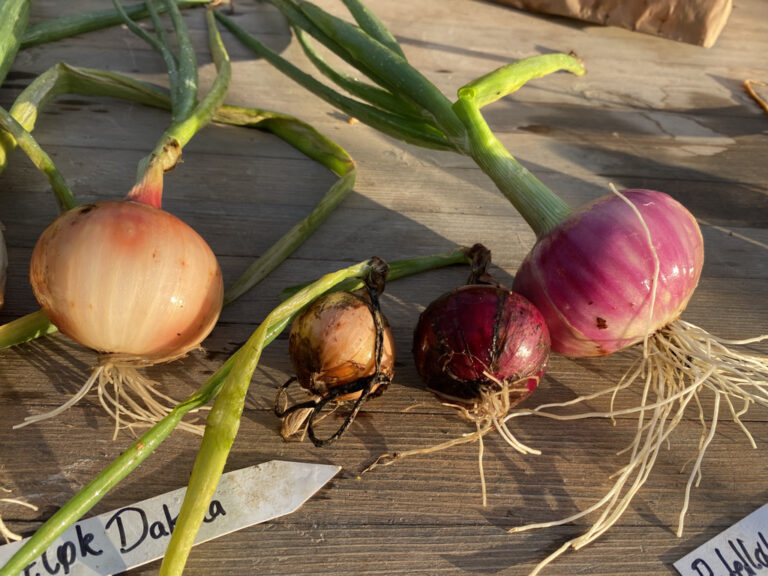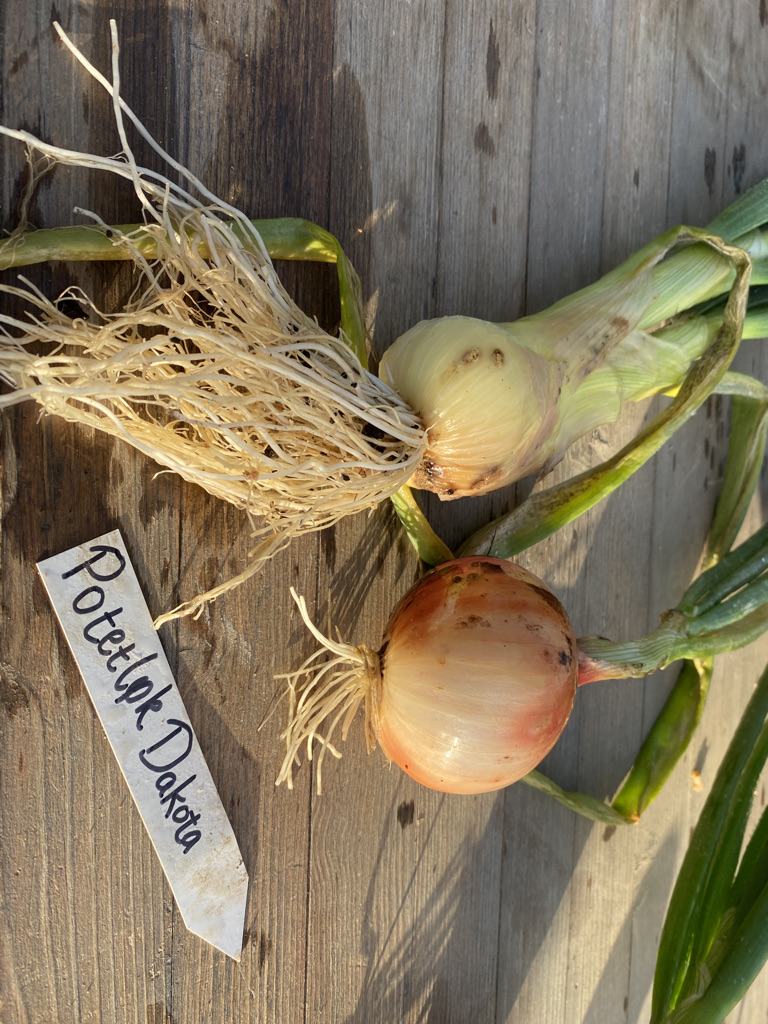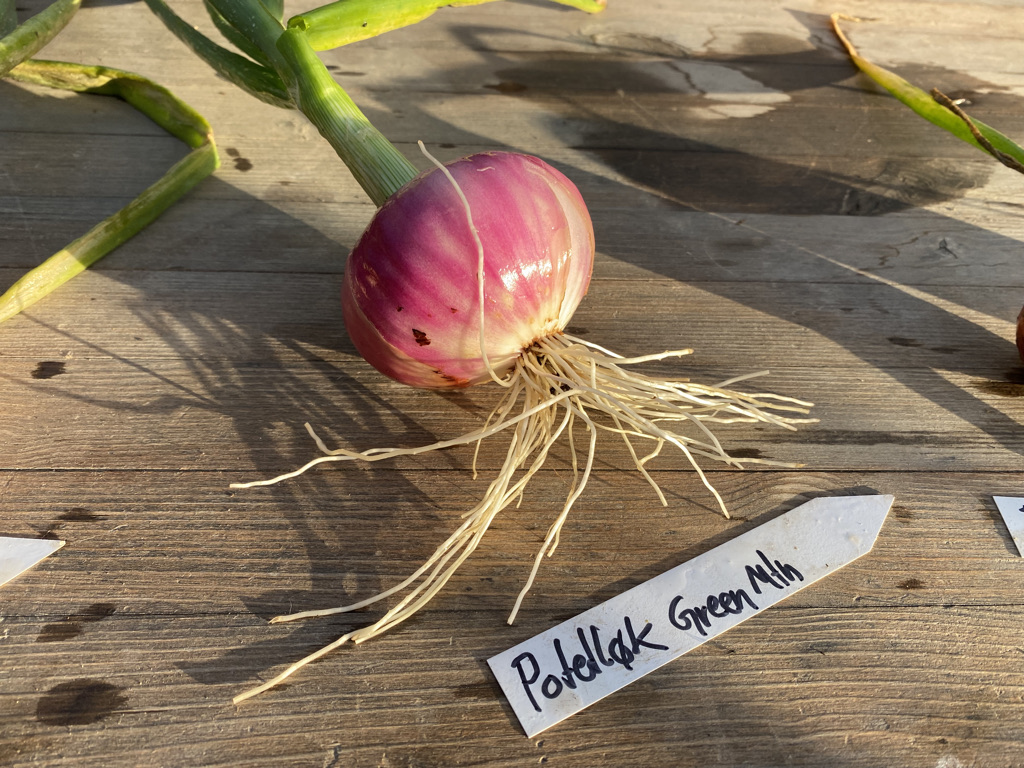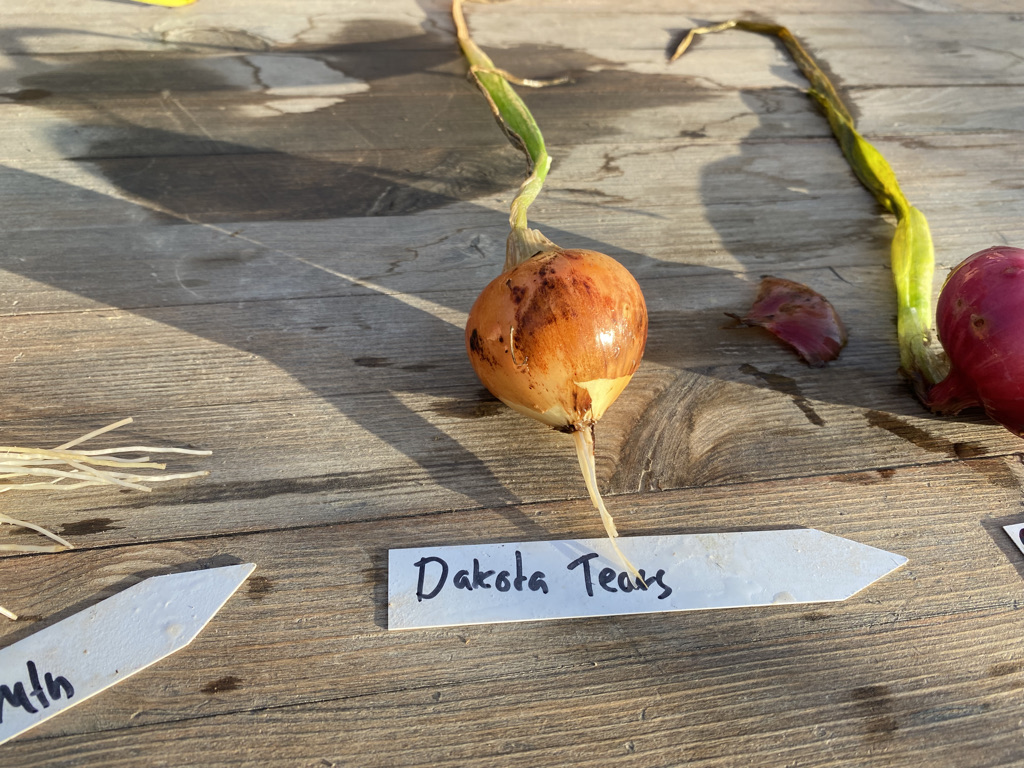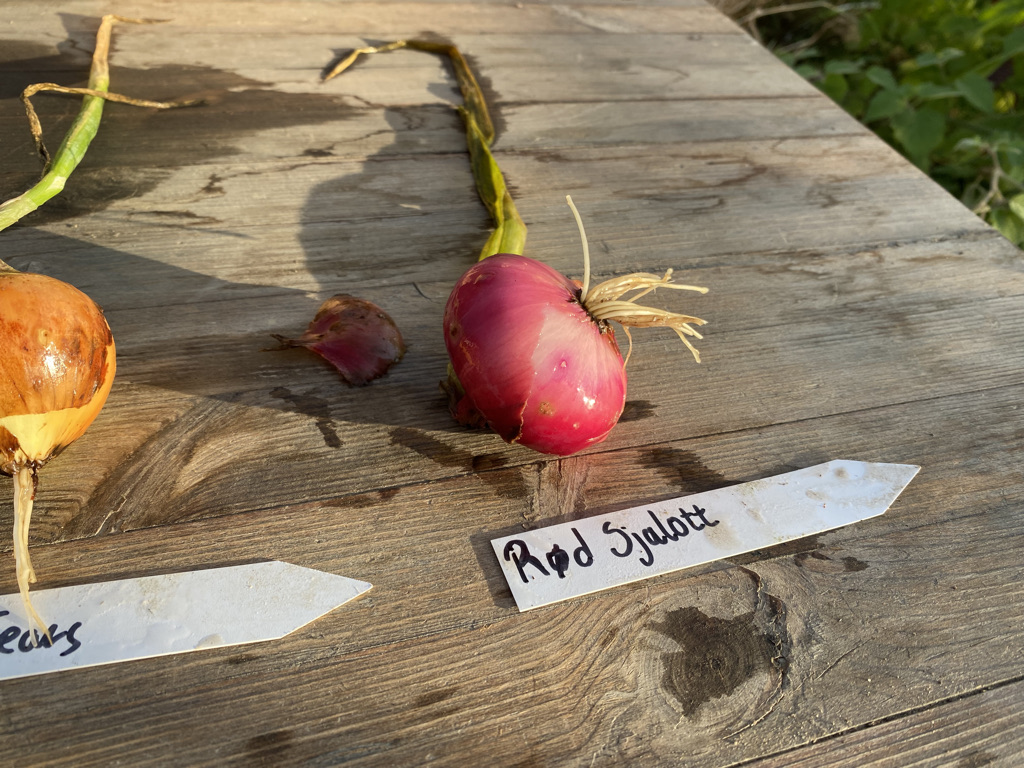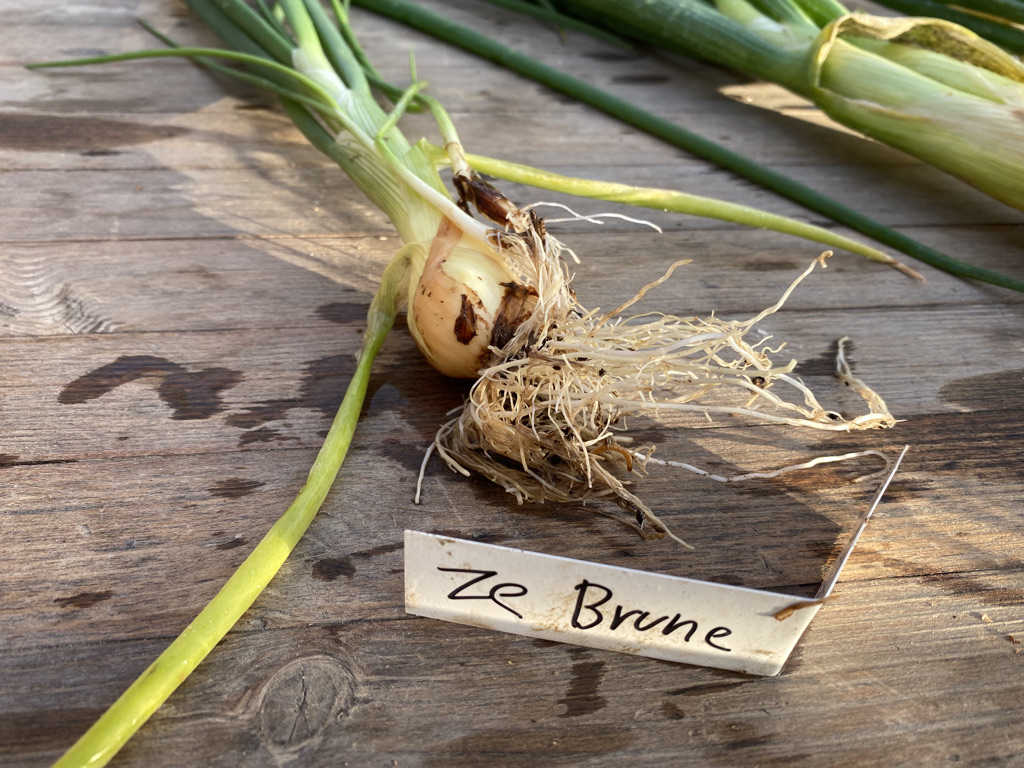Since I started growing my own food, I have stuck to the principle that I should always grow what I like to eat and ignore what its cost in the store is. As I mentioned in Ancient Garlic, garlic prices are artificially low due to Chinese global dominance of the market. Onion prices too are extremely low due to conventional agricultural practices and small farms can forget growing onions for local markets if making money is their objective. In fact, several types of onions that were once popular in kitchen gardens all over the world are near extinct, and in some cases have gone extinct.
Growing what I love to eat has become a process of getting to know entire families of plants and stewarding them by saving their seeds. The onion, or Allium genus, is one of my top four families that I grow; the other three being Amaranth, Cucurbit and Nightshades. Thanks to Stephen Barstow and a few other allium nerds who have provided me with seeds, I now have a large and growing collection of Alliums.
This year I decided to really go for it and trialed a bunch of new Alliums. I tried about 40 varieties of garlic from true garlic seed that I got from Seed Savers Exchange. Of them, about 15 survived the dry summer. I will be using a trick I learned when visiting Anders Nordrum recently to get them through this winter.
Anders and Torstein Jæger Dahlen recently held a gathering of Allium experts at Anders´ farm 650 meters above sea level, which I was lucky enough to be invited to. We visited their test bed at 900 meters above sea level and another farm at 800 meters above sea level where they have been testing varieties of garlic, shallots and potato onion. One of the attendees, Jostein Skaar, had found a way to get garlic bulbils to mature to full cloves in 1,5 years. He sowed the bulbils at 2 cm deep and 7 cm apart in the spring. Then, in the fall of the first year he covered them with 5 cm more soil, protecting them from the cold winter. The second summer they were ready to harvest by July.

Anders Nordrum with his famous Valdres Garlic: initially from Belarus
I will be following his advice and leaving all my garlic from true garlic seed in the ground and covering them with 5cm more soil. My hope is that by next summer I will have cloves from these 15 new varieties of garlic which I can share with the Norwegian Seed Savers.
The second category of alliums I trialed are all related to Allium cepa in one way or another. Allium cepa is what we usually think about when people think of onions. They include both red, white, yellow, and brown onions; as well as shallots and something most people have not heard of called potato onion. There is a category of onions called multiplier onions where instead of growing them from seed, you grown them from clones, just like one grows garlic. These include, shallots, Egyptian walking onion (Allium X proliferum) and potato onions.
Potato onions are genetically about the same as shallots but look like regular onions. Instead of growing the onions from seed, you grown them from multipliers.
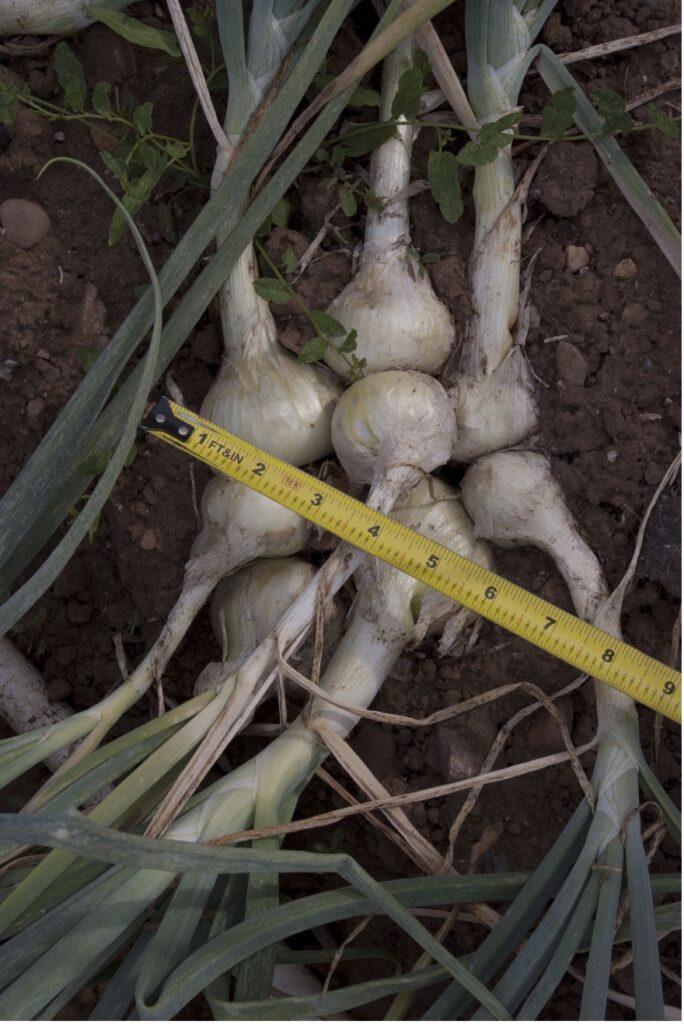


Kelly Winterton and his Potato onions. Pictures from Kellys Garden Webside See link below
As there are strict rules for importing plants from outside the EU, I got seeds from potato onions from a member of the Seed Savers Exchange in the States by the name of Kelly Winterton. He sent me three of his varieties, Green Mountain, Dakota and Sese. He writes about these amazing onions on his website Kellys Garden. All three varieties have produced onions and I will gradually build up stock of them and share them with the Norwegian Seed Savers. In addition, I got a couple of Luntevika Potato onions from Anders which are old Norwegian Heirloom varieties that he was growing at 900 meters above sea-level.
I also managed to multiply several Johannes shallots I got from Stephen last year. These are beautiful shallots which used to be more popular and which Stephen writes about on his blog.
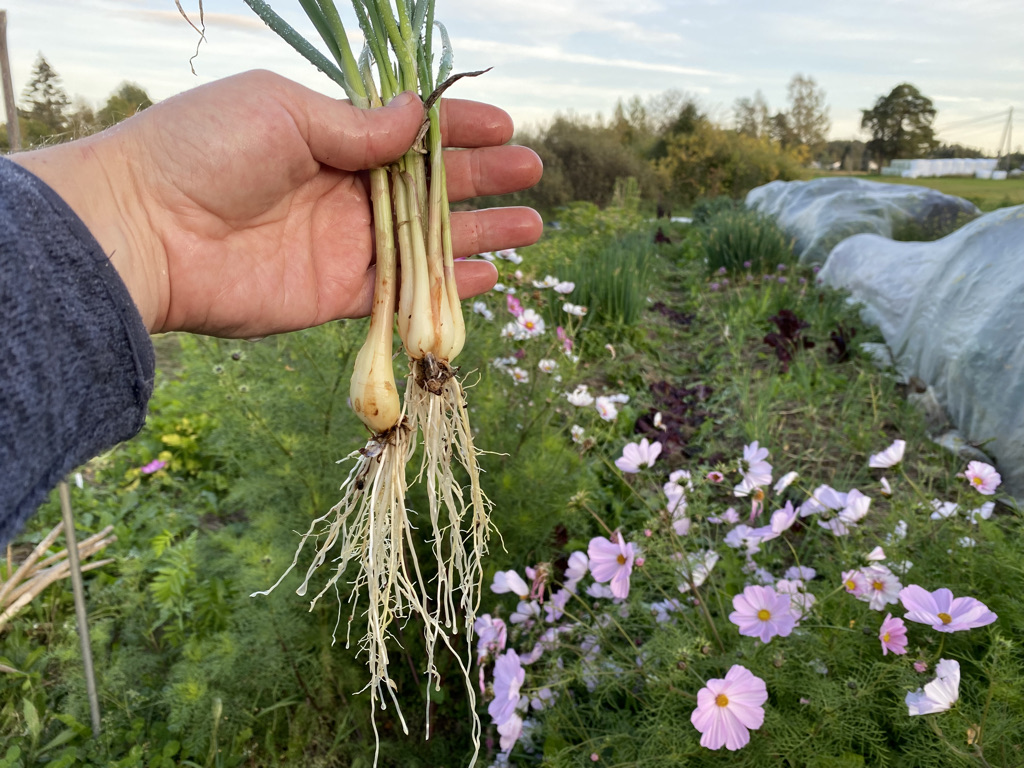
Johannes Shallots harvested out of season to show level of growth in September.
I am least happy with regular red and yellow bulb onions (Allium cepa) from seed. I feel there must be something I don’t know about growing alliums that I need to learn. This is often the case and one needs to crack the code of each plant. I need to either figure this out or just move on and use potato onions and shallots from now on.
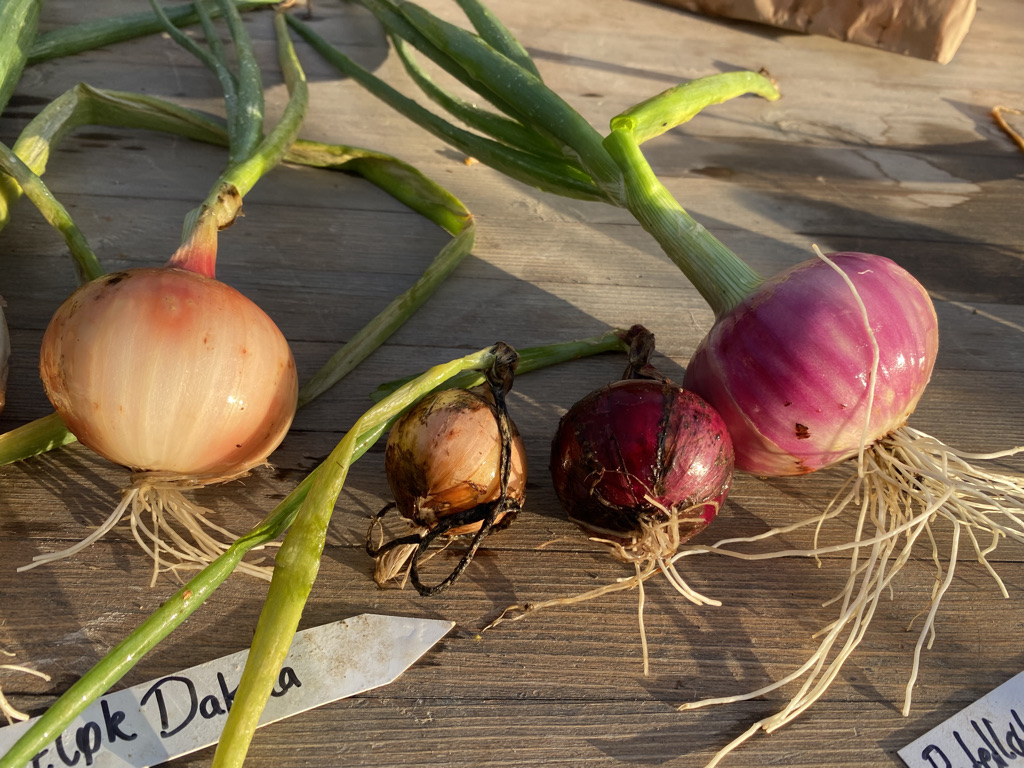
Dakota potato onion, yellow cepa, red cepa and Green Mountain. All from seed sown at the same time.
Besides the 25 alliums in the category of garlic and cepa, I also saved seeds from Allium pskemense x fistulosum which I am quite happy about. I got this onion from Stephen Barstow who writes about it on his blog. He says that it is native to Uzbekistan, Kyrgistan and Kazakhstan and is possibly an ancestor of the common bulb onion, Allium cepa.
I am also happy about Allium spirale which are blooming. I only hope they get viable seed before the winter comes. The insects are loving them now.
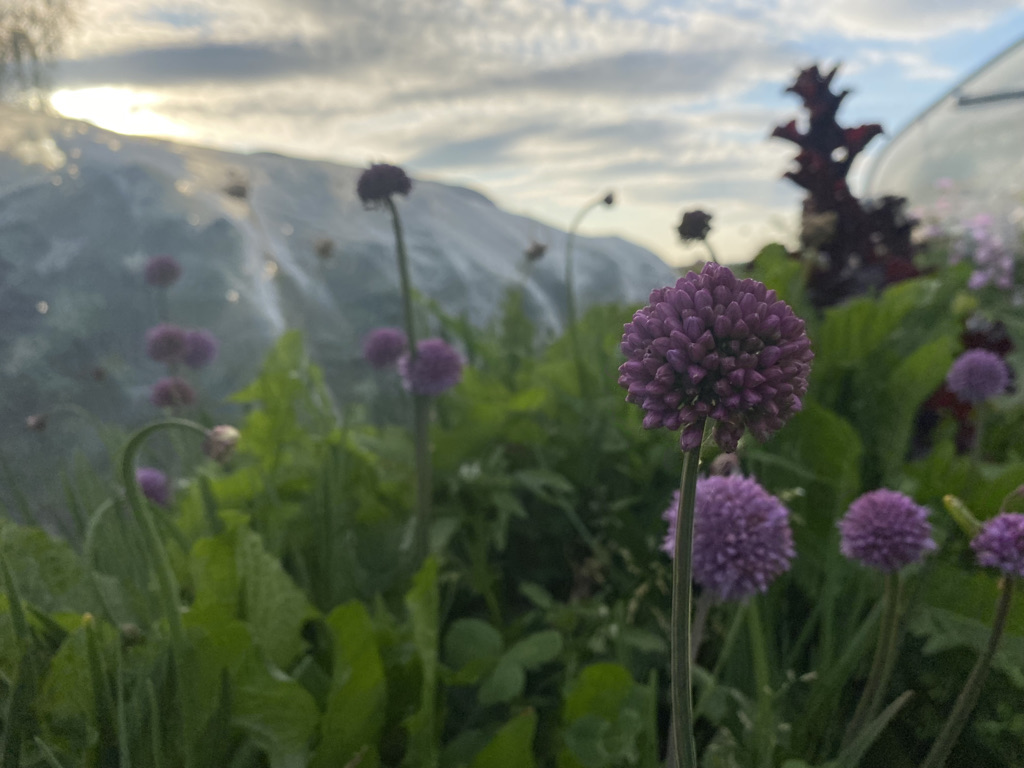
Allium spirale. A late bloomer.
I am a huge Leek fan and have been growing and reproducing leek for years. I have several perennial varieties including several varieties which have gone to seed this year like Shisheds leek.
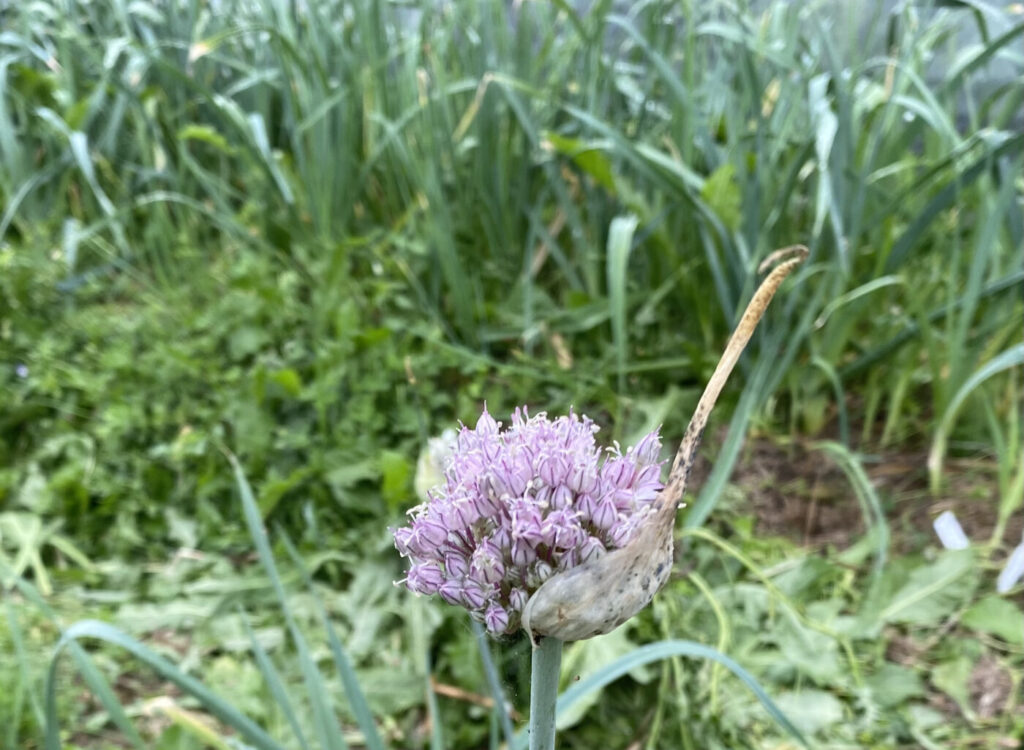
Shisheds Leek
Sherpa onion (Allium wallichii) has also been a success this year both vegetatively, and from seed. Another stunner is Allium karataviense which I saved seeds from, and which has a huge onion.

Allium karataviense 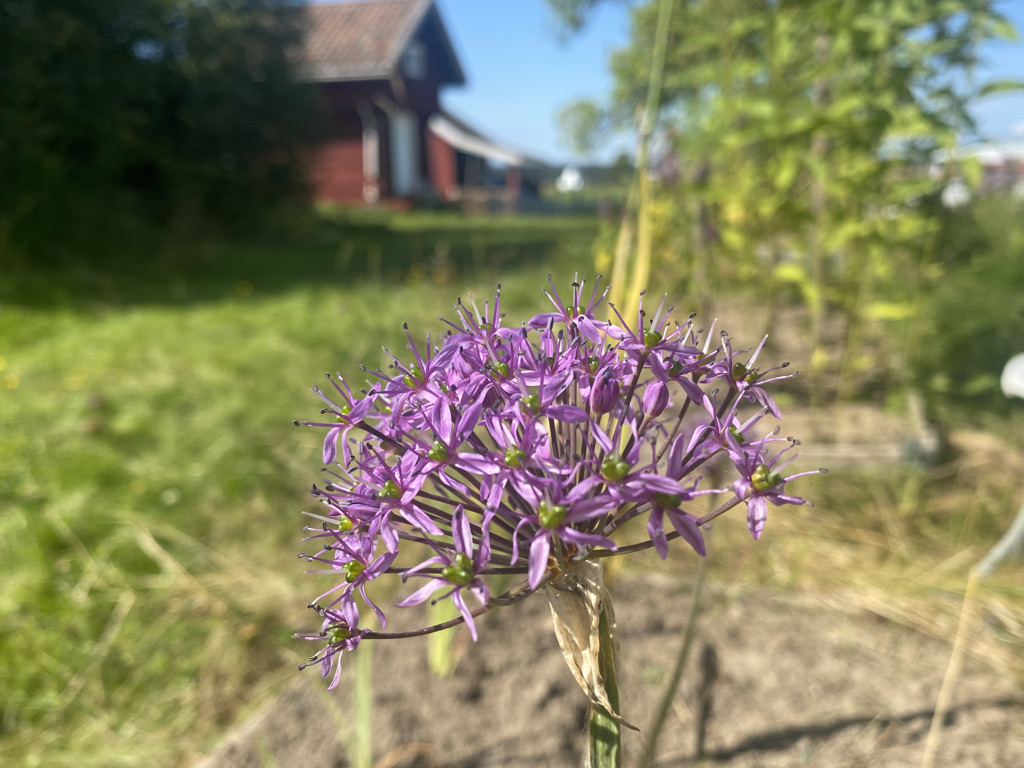
Allium wallichii
I have several new crosses which I am working on but will not mention here as I don’t want to jinx it. I feel quite pleased with the results, despite having lost more than half of the trials, it’s great to now have about doubled the varieties on the farm in one season. What’s more, these are all more closely related to conventional varieties that have good edible qualities and are easier for homesteaders and gardeners to grow than regular onions from seed which I know quite a lot of hobby growers struggle with. I feel confident that in a few years I will have stock of these rare varieties that I can share and even sell, increasing Norway’s ability to feed itself in an uncertain and changing time and climate.

